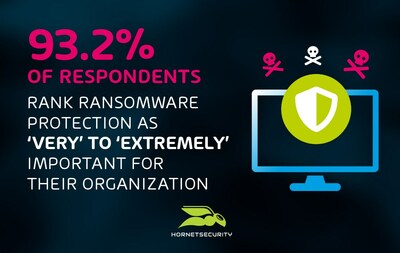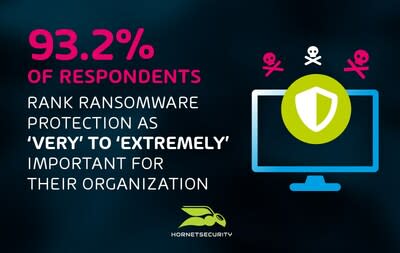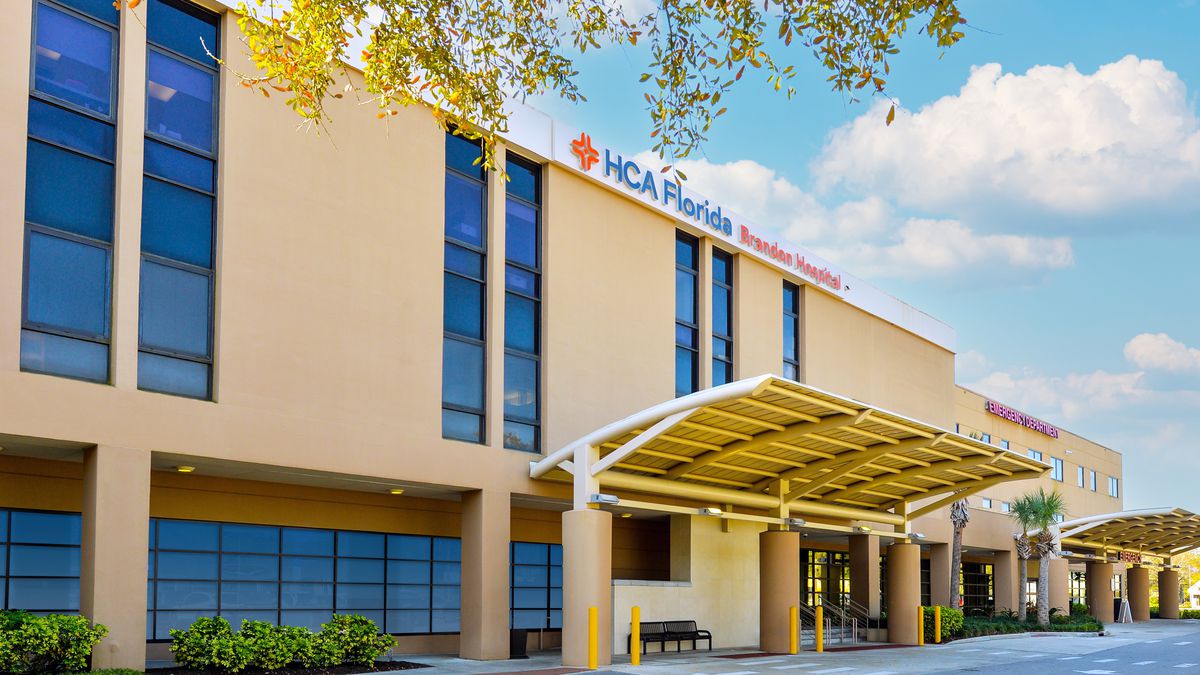Hornetsecurity: almost 60% of businesses are ‘very’ to ‘extremely’ concerned about ransomware attacks
PITTSBURGH, PA – 10 October 2023 – Nearly 60% of companies are ‘very’ to ‘extremely’ concerned about ransomware attacks, according to latest research from leading cybersecurity provider Hornetsecurity. The company released the survey results at IT-SA 2023, Europe’s largest IT security trade show, where it is exhibiting.
In its annual Ransomware Survey, Hornetsecurity revealed that more than nine in ten (92.5%) businesses are aware of ransomware’s potential for negative impact, but just 54% of respondents said their leadership is ‘actively involved in conversations and decision-making’ around preventing such attacks. Four in ten (39.7%) said they were happy to ‘leave it to IT to deal with the issue’.
Commenting on the findings, Hornetsecurity CEO Daniel Hofmann, said: “Our annual Ransomware Survey is a timely reminder that ransomware protection is key to ongoing success. Organizations cannot afford to become victims –ongoing security awareness training and multi-layered ransomware protection is critical to ensure there are no insurmountable losses.”
Ransomware protection is a necessity
Reassuringly, 93.2% of respondents rank ransomware protection as ‘very’ to ‘extremely’ important in terms of IT priorities for their organization, and 87.8% of respondents confirmed they have a disaster recovery plan in place for a ransomware attack.
However, that leaves more than one in eight organizations (12.2%) without a disaster recovery plan. Of those companies, more than half cited a ‘lack of resources or time’ as the primary reason. Additionally, one-third of respondents said a disaster recovery plan is ‘not considered a priority by management’.
Comparing Ransomware Survey results in 2021-2023
This survey has been conducted annually over the past three years and has included asking respondents if their organization has fallen victim to a ransomware attack.
Since 2021, Hornetsecurity has found relatively small changes in the percentage of respondents saying their organizations have fallen victim to a ransomware attack: 21.1% in 2021, 23.9% in 2022, but a new low of 19.7% in 2023.
Additionally, companies that reported paying a ransom are down from 9.1% in…




